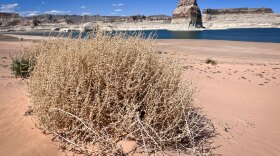-
October set the stage for Utah to have a solid spring snowmelt runoff. That is, if the state can catch enough snow this winter.
-
During droughts and disasters, the Washington County Water Conservancy District’s draft plan could cut up to 60% of the water cities get and leave it up to city leaders to figure out how to get by with less.
-
The water year that ended Sept. 30 was one of the driest on record for parts of the state, including Salt Lake City and St. George.
-
After a promising forecast, monsoon rains ghosted Utah for most of the summer. While the recent showers were a welcome relief, they couldn’t help the state climb out of its precipitation deficit.
-
Utah’s reservoirs are at 67% capacity, but some people are tuning out the message to save water.
-
Since 2000, heat has become the primary force behind how severe and widespread Western droughts get.
-
The announcement Friday by federal officials means Arizona will again go without 18% of its allocation, while Mexico loses 5%. The reduction for Nevada will stay at 7%
-
The Southwest megadrought that began in 2000 could continue until 2050 or maybe even the end of the century. That would mean tough choices for Utah and the Colorado River Basin.
-
Gov. Spencer Cox wants Utahns to celebrate Pioneer Day responsibly, “especially when it comes to fireworks with the drought that we're having and the fire danger that is out there,” he said.
-
Between dams, diversions and a changing climate, the Colorado River doesn’t flow like it used to. Now, scientists and conservationists in Utah are working to give cottonwood trees a better chance.
-
This seasonal dance choreographed by Mother Nature marks a special time for the southwestern United States and Mexico. It is when residents clasp their hands, hoping for much-needed moisture to dampen the threat of wildfire and keep rivers flowing.
-
Back in February, Amy Haas, executive director of the Colorado River Authority of Utah, said it would be "folly" for the seven Colorado River states to take their negotiations to court.
Play Live Radio
Next Up:
0:00
0:00
Available On Air Stations












